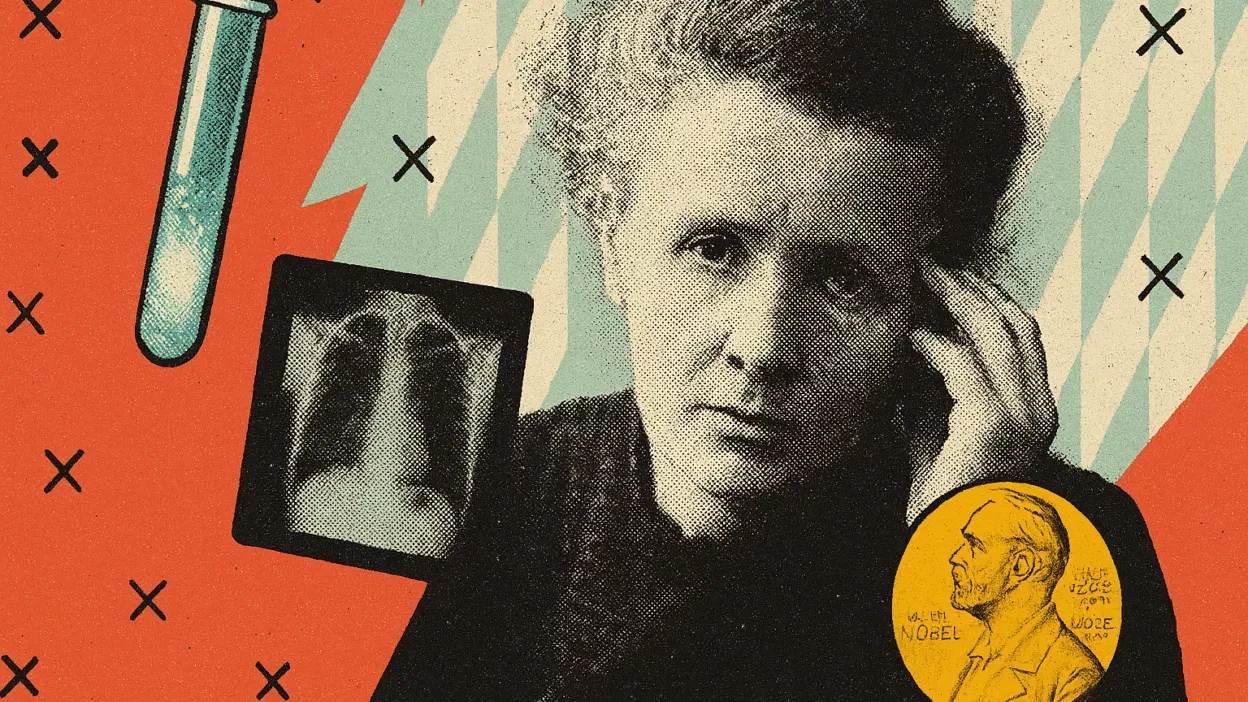Marie Skłodowska Curie’s groundbreaking work in the late 19th and early 20th centuries unveiled the elements polonium and radium, establishing the field of radioactivity and transforming both physics and chemistry (en.wikipedia.org). Her discoveries laid the foundation for modern medical treatments—most notably radiation therapy—and led to the establishment of two Curie Institutes that continue to drive cancer research worldwide (en.wikipedia.org). Despite pervasive gender bias and the physical toll of prolonged radiation exposure, Curie’s unwavering perseverance secured her place as the first person to win Nobel Prizes in two separate scientific fields (en.wikiquote.org, wired.com). Today, her legacy inspires scientists to pursue knowledge with curiosity and courage, reminding us that understanding banishes fear and that “what remains to be done” drives progress (smorescience.com).
Historical Context
Marie Curie was born Maria Skłodowska on November 7, 1867, in Warsaw, then part of partitioned Poland (en.wikiquote.org). Denied university entry in her homeland, she relocated to Paris in 1891 to study physics and mathematics at the Sorbonne (en.wikipedia.org). At a time when women were largely excluded from formal scientific circles, her academic excellence earned her a degree in physics (1893) and in mathematics (1894) (en.wikipedia.org). Inspired by Henri Becquerel’s discovery of spontaneous radioactivity (1896), Curie began investigating the phenomenon, hypothesizing that radioactivity was an atomic property, not a chemical reaction (nist.gov).
Major Breakthroughs
In 1898, Curie and her husband Pierre announced the discovery of polonium—named for her native Poland—and, months later, radium (wired.com). Their painstaking chemical separation, which involved processing tons of pitchblende, yielded minute quantities of radium chloride by 1902 (en.wikipedia.org). These elements exhibited radioactivity far exceeding that of uranium, confirming Curie’s theory of atomic-origin radiation (nist.gov). For this work, Curie shared the 1903 Nobel Prize in Physics with Pierre Curie and Henri Becquerel, becoming the first woman ever to receive a Nobel Prize (wired.com).
“Nothing in life is to be feared, it is only to be understood. Now is the time to understand more, so that we may fear less.” (bookey.app)
Scientific Impact
Curie’s revelations triggered a cascade of advances: radiation became an invaluable diagnostic and therapeutic tool in medicine, leading to early forms of cancer treatment (mariecurie.org.uk). During World War I, she equipped mobile radiography units—“Little Curies”—to assist battlefield surgeons by providing X-ray imaging near the front lines (en.wikipedia.org). After the war, she founded the Institut du Radium in Paris (1920) and the Radium Institute in Warsaw (1932), both of which remain premier centers for cancer research and atomic physics (en.wikipedia.org).
Overcoming Barriers
Curie faced relentless obstacles: gender discrimination in academic appointments, chronic health issues from radiation exposure, and the tragic loss of Pierre in 1906 (en.wikipedia.org). Undeterred, she assumed his teaching post at the Sorbonne—the first woman to hold such a position—and persisted in her experiments amid profound personal grief (en.wikipedia.org). Her meticulous laboratory notebooks, still too radioactive to handle without protection, testify to her dedication and the unseen hazards pioneers of radioactivity endured (wired.com).
“One never notices what has been done; one can only see what remains to be done.” (smorescience.com)
Legacy and Inspiration
Curie’s dual Nobel honors—Physics (1903) and Chemistry (1911)—remain unmatched, affirming her monumental role in shaping modern science (en.wikiquote.org). In 1995, she became the first woman interred on merit in the Paris Panthéon, a testament to her extraordinary contributions (en.wikipedia.org). The element curium (atomic number 96) and the unit curie (Ci) bear her name, perpetuating her influence in both nomenclature and practice (wired.com). Her life story continues to empower women in STEM, demonstrating how intellectual passion can overcome societal constraints (oncodaily.com).
Lessons for Today
Curie’s journey underscores the value of curiosity, resilience, and ethical scientific conduct. Modern researchers draw on her example to approach emerging fields—such as quantum computing and genomic editing—with both adventurous spirit and caution. Her insistence on rigorous measurement reminds us that robust methodology underpins every breakthrough. Moreover, her vision—that science serves humanity’s welfare—resonates in global efforts to harness technology for sustainable healthcare, climate resilience, and social equity.
9 Further Reading
- Marie Curie (Wikipedia): Comprehensive biography and context on her life and work (en.wikipedia.org)
- Dec. 21, 1898: The Curies Discover Radium (Wired): A detailed account of the radium discovery (wired.com)
- Marie Curie the Scientist (MarieCurie.org.uk): Insights into her scientific achievements and the charity named in her honor (mariecurie.org.uk)
- NIST Blog: Marie Skłodowska-Curie: Analysis of her legacy for women in science (nist.gov)
- Honoring Marie Curie (OncoDaily): Overview of her impact on medicine and research (oncodaily.com)
- Smorescience Quotes: Marie Curie: Collection of her thought-provoking quotes (smorescience.com)




